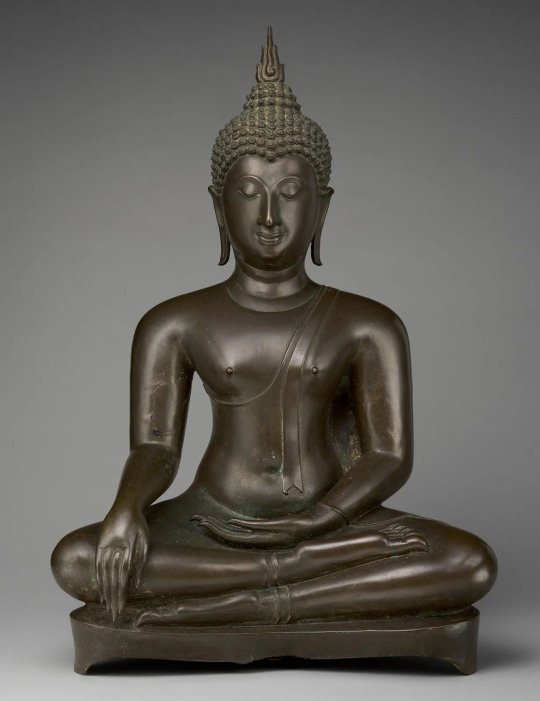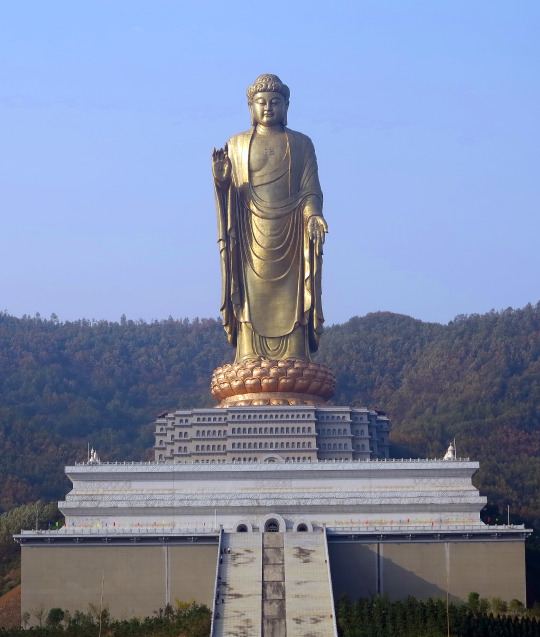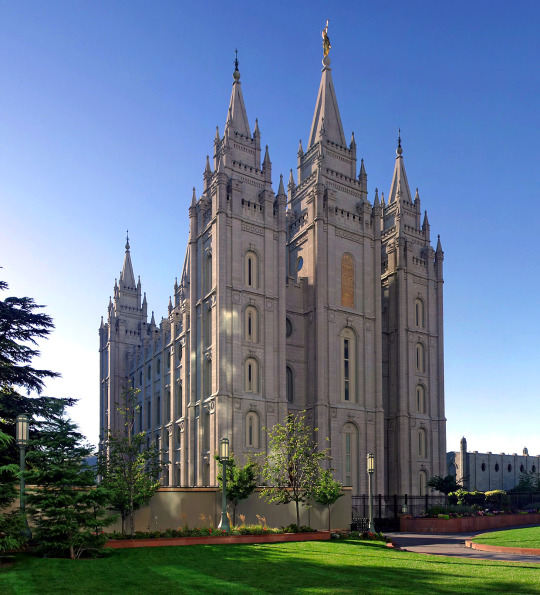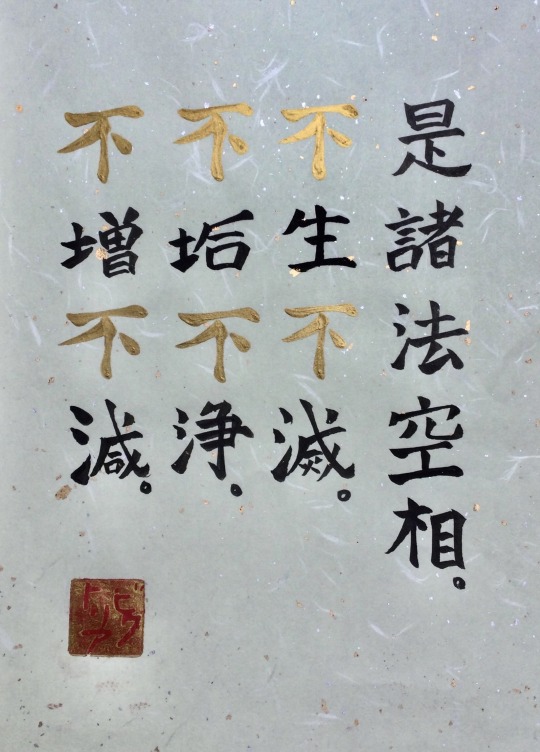Text
4 notes
·
View notes
Text
The diversity of Buddhism is fascinating. All the way from “there are no gods, there are no miracles, there’s no such thing as an immortal soul, karma and reincarnation are just metaphors,”

to “Siddhartha Gautama the Buddha was one human incarnation of the omnipotent multiversal being Mahāvairocana who came to give supernatural powers to his Enlightened followers, one of whom, Amitābha, made a Pure Land where you can go after you die if you call upon his name.”

Granted you could also kind of say the same thing about Christianity, but that’s always been a lot more self-policing of deviance, after all if you think there’s only one truth you want to nail down what exactly it is. Groups like Gnostics or Unitarian Universalists have always been marginalized, with the possible exception of the Mormons, who were isolated enough to actually build up some population.

9 notes
·
View notes
Text
Your cards cannot think for you your teachers cannot think for you spirits cannot think for you your gods cannot think for you. YOU have to think for you. Do not outsource your thinking onto other figures, because there are and will be people looking to fill that void and tell you where to go and what to do and how to spend your money, and you will cede all control if someone speaks it cleverly enough.
708 notes
·
View notes
Text
Excerpt from the Heart Sutra

是諸法空相 = All phenomena bear the mark of Emptiness
不生不滅 = no Birth no Death
不垢不浄 = no Defilement no Purity
不増不減 = no Increasing no Decreasing
(Translation by Thich Nhat Hanh)
The Heart Sutra is one of the most important sutras (religious texts) in Buddhism. It celebrates the idea that all things of the physical world are "empty"; this is the true nature of reality.
This insight can help us to overcome all pairs of opposites: birth/death, defilement/purity, increasing/decreasing, subject/object….
This is a state of coolness, peace, and non-fear which can be experienced in this life.
116 notes
·
View notes
Text
“…the eyes are the condition for forms to be seen, but the consciousness that depends on the eyes has no form. The ears are the condition for sounds, but the auditory consciousness has no form. The nose is the condition for smell, but the olfactory consciousness has no form. The tongue is the condition for taste, but the gustatory consciousness has no form. The body is the conditioning factor for touch, but the tactile consciousness has no form. Neither the sphere of mental objects nor knowledge have form”.
–Bhadrapāla Sūtra
283 notes
·
View notes
Text

We are not meant to read the sentence
"All beings are Buddha" and then close the book and keep it on a shelf.
Following the path means acting like a buddha, thinking like a buddha, dwelling like a buddha, manifesting like a buddha, texting someone like a buddha, listening to a nagging friend like a buddha, waiting in line at the grocery store like a buddha, dressing in black tie for a dinner at Buckingham Palace like a buddha.
The technique of cultivating the discipline to maintain awareness that all beings are buddhas, including Donald Trump and Pol Pot, and that every place is a Buddhafield, including Patpong and Las Vegas, is what we call the Vajrayana, the result path.
~ Dzongsar Khyentse Rinpoche
The Guru Drinks Bourbon?
14 notes
·
View notes
Text
Do I have any followers with singing experience?
I've been trying to do my daily nianfo sessions more singed out rather than dry recitation, but I've been coming up with some problems. Mainly I find myself running out of breath. I would appreciate any advice.
I've also been wondering what best practices I ought to follow to take care of my throat and voice. Just generally I think it'd be nice. I often do nianfo sessions in the evenings right after work, but given that what I do all day is answer phones I've been wondering if maybe I should observe some kind of cooldown as to not strain it too much.
Not aiming to be a professional singer, just taking care of my voice and making it a pleasant sensory offering for the Buddhas. So it doesn't have to be like super strenous vocal drills or anything.
4 notes
·
View notes
Video
Thai Buddhist monk: I …..will…..keep….. praying….
(Source)
24K notes
·
View notes
Text
Happy Trans Day of Visibility!
🏳️⚧️🏳️⚧️🏳️⚧️
May all beings be happy and free. 🙏
8 notes
·
View notes
Text

Heracles and the Buddha
This is based on the fascinating fusion of cultures after Alexander the Great invaded India, otherwise known as Indo-Greek or Greco-Buddhism.
In Gandharan sculpture, Heracles is depicted alongside the Buddha as Vajrapani, the Buddha's protector. The pairing of two figures so iconic in their mythologies seemed perfect material for art.
The Buddha would help Heracles with anger management, while Heracles would help with clobbering evildoers. Business as usual.
91 notes
·
View notes
Text
Reminder: Upcoming 3 Refuges and 5 Precepts by Master Renshan
Amituofo, everyone! Just reminding anyone interested that in less than a week Master Renshan, the abbot of Zhenning Buddhist monastery in Qingtian, China is going to lead an online 3 Refuges and 5 Precepts ceremony. And of top of that it's been announced that in addition to the ceremony Master Renshan has decided to give a Dharma talk about Pure Land Patriarch Ou'yi's commentary on the Amitabha Sutra.
This is a great opportunity for anyone wanting to convert formally to Buddhism and receive a Dharma name. All you need to do is register here and you can become Dharma siblings with me and all of Master Renshan's other students.
I would recommend checking out this list of resources I have compiled, including translated excerpts of Master Renshan's Dharma talks, talks by his student Jiawen, free downloads of Dharma books, and even animated versions of the Pure Land sutras.
The Dharma Talk is gonna be from 7-8 PM China time on March 28th and the ceremony proper from 8 to about 8:30 PM. I myself will be there to renew my refuge and precept vows and I hope to see you all there!
5 notes
·
View notes
Photo

Pratisara Mantra, 927 CE, found near Luoyang, China
1K notes
·
View notes
Text
More people need to talk about the phenomenon of the misuse of the concept of cultural appropriation as a tool to isolate groups, decrease dialogue, harm multiculturalism, and promote racial stereotyping.
Some people obfuscate the meaning of the phrase "cultural appropriation," which includes elements of ignorance, disrespect, self-benefit, and exploitation, and apply the concept to situations where that's not occurring. They do this, often, to actually PROMOTE racial stereotyping. For example, the criticism of a white person for wearing a noragi jacket. If they understand where it comes from, acknowledge that, and aren't benefitting financially at the expense of Japanese people, then the reasonable position is that it is NOT cultural appropriation. When we make accusations of cultural appropriation in these situations, what we are actually doing is suggesting that Japanese clothing *shouldn't* be worn by white people because that's not what white people do. That's racial stereotyping and is anti-multicultural. In addition, one can understand how an avoidance of Japanese clothing among white people might actually harm Japanese owned business. So, in such an example, accusations of cultural appropriation can have a detrimental effect on the source culture!
I've seen the misuse of cultural appropriation by Christians as a way of persuading white Americans to avoid exploring other religious traditions like Buddhism, Islam, and certain Daoist or Hindu groups, which welcome converts. That has a negative effect on the source culture as well. Buddhists, for example, welcome participants and support from people of all races and cultures. If white people avoid going to Buddhist temples simply because they're afraid of accusations of cultural appropriation, Buddhists are actually harmed by that.
There's also a phenomenon where people accuse others of cultural appropriation when they admire and engage with multiple practices from the same culture. However, this is also harmful because approaching another person's culture in a multi-faceted holistic way, as opposed to a segmented way, is going to lead to a deeper understanding, respect, and admiration for that culture. For example, yoga is mainstream in the United States. This is often Americans' only exposure to Indian culture. Wouldn't it be better for somebody interested in yoga to also explore Indian culinary traditions, philosophy, religion, and history rather than just stopping with yoga poses? Nothing in culture exists segmented from other aspects of culture. An Indian-centered approach to yoga, that might lead somebody into a deep love and appreciation for Indian culture, is far more likely to be of benefit to Indians than somebody who takes yoga and leaves the rest.
So yes, cultural appropriation is real. We need to be educated on a culture and understanding of a particular person's background and intentions before knowing if it is occurring. Far too often, we invoke cultural appropriation without first understanding those things, and when we do that, we are harming the people we intend to help.
14 notes
·
View notes
Text

In the past, when the Buddha was alive surrounded by multitudes of Arhats and when the teachings prospered, what buildings must their benefactors have built for them! It was all impermanent; there is nothing left to see now but an empty plain. In the same way, at the universities of Vikramashila and Nalanda, thousands of panditas spent their time instructing enormous monastic assemblies. All impermanent! Now, not even a single monk or volume of Buddha's teachings are to be found there.
Take another example trom the more recent past. Before the arrival of the Chinese Communists, how many monasteries were there in what used to be called Tibet, the Land of Snow? How many temples and monasteries were there, like those in Lhasa, at Samye and Trandruk?
How many precious objects were there, representations of the Buddha's Body, Speech and Mind? Now not even a statue remains. All that is left of Samye is something the size of this tent, hardly bigger than a stupa. Everything was either looted, broken or scattered, and all the great images were destroyed. These things have happened and this demonstrates impermanence.
In the same way we should try to think of our fathers, mothers, children and friends... When the Tibetans escaped to India, the physical conditions were too much for many of them and they died. Among my acquaintances alone, there were three or four deaths every day. That is impermanence. There is not one thing in existence that is stable and lasts.
~ Dilgo Khyentse Rinpoche in, Enlightened Courage:
7 notes
·
View notes
Text
All Teachings Point Toward You
The only measure of value for teachings given in a classroom is in the way they are utilized outside the classroom in real life.
Without those teachings becoming a lived experience they remain a mental masturbation, an interesting packet of academia at best.
The same can be said for spiritual teachings. They are not given so that they can be studied, analyzed, and learned.
You actualize the value in a spiritual teaching when it is examined within your lived experience and then integrated as some form of adjustment leading to your own confirmation of the teaching.
This is also why on a superficial level certain spiritual teachings can appear contradictory. They aren’t inherent truths; they are hints and tips and catalysts.
The emphasis isn’t on the teachings objectively but on what they reveal for you subjectively.
Such is the long-lost art of contemplation. Our English language equates contemplation with "thinking about something." The reduction of contemplation to a thought-based activity entirely misses the point.
Wikipedia offers a lovely definition: "In a religious context, the practice of contemplation seeks a direct awareness of the divine which transcends the intellect, often in accordance with prayer or meditation."
So a teaching doesn't inherently matter if you do not chew on it, experiment with it, marinate in it, and test it. This means to say none of it matters if you do not practice, whether that be prayer, meditation, or other spiritual technologies. It is never about whether you agree with or believe in a teaching.
If I were to quote you an Eckhart Tolle teaching, "Gratitude is the foundation of all abundance," it wouldn't matter if you don't contemplate it. The quote sounds pretty and makes enough sense. Yet without sustained practice of gratitude and examination of how it impacts your sense of abundance or scarcity, you don't benefit from the wisdom given.
"Contemplation is the art of holding a word or a phrase patiently in the silence and stillness of awareness until it begins to disclose deeper and deeper meanings and understandings. Contemplation has the power to transcend beyond (not regress back from) the limits of analytical thought and logic, and open consciousness up to an order of wisdom and Truth that can only be described as revelation."
-- Adyashanti
Keep this in mind with anything you encounter here on my blog or elsewhere. Otherwise you may collect many pretty words all the while remaining bereft of lucid illumination.
LY
96 notes
·
View notes
Text

😀🙏
4 notes
·
View notes
